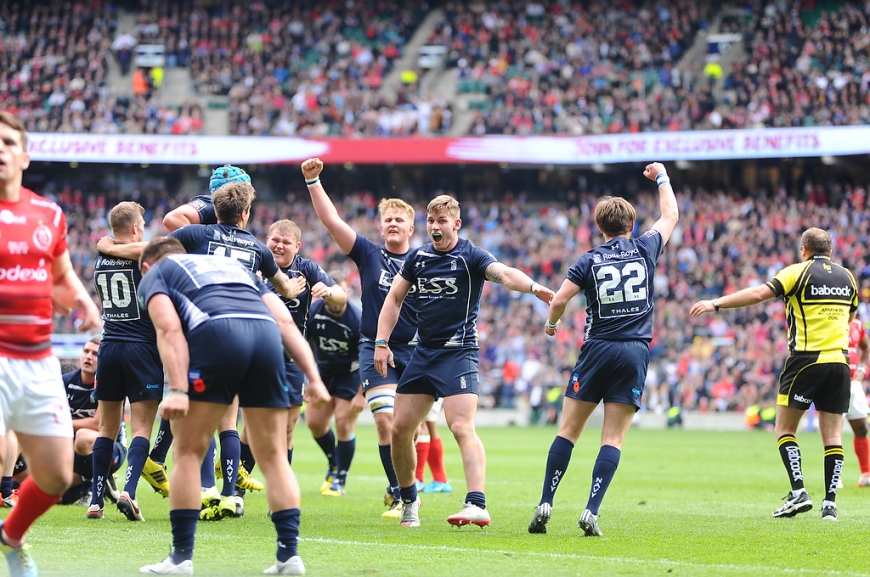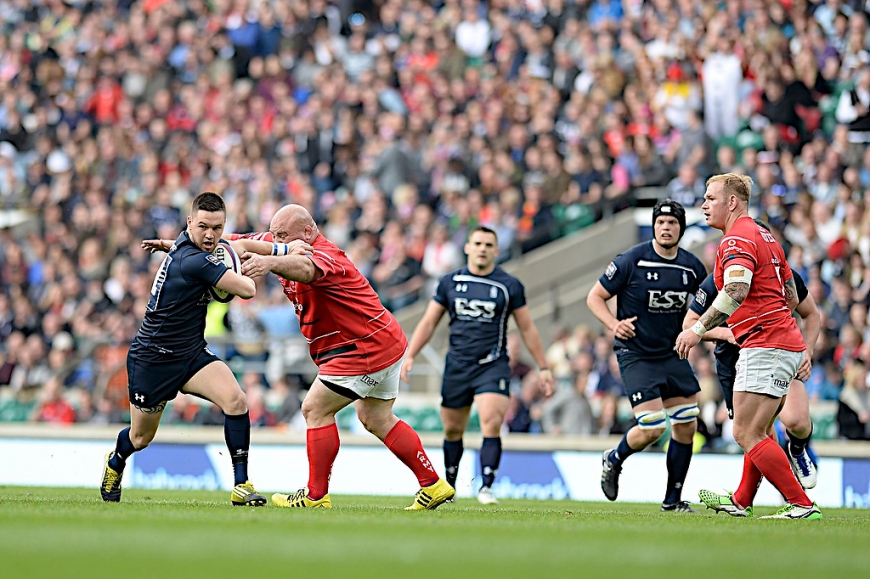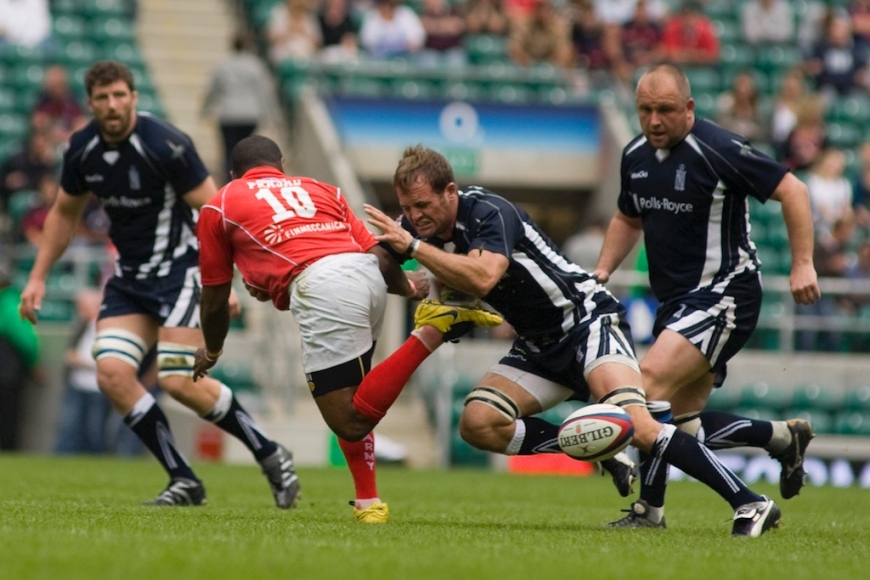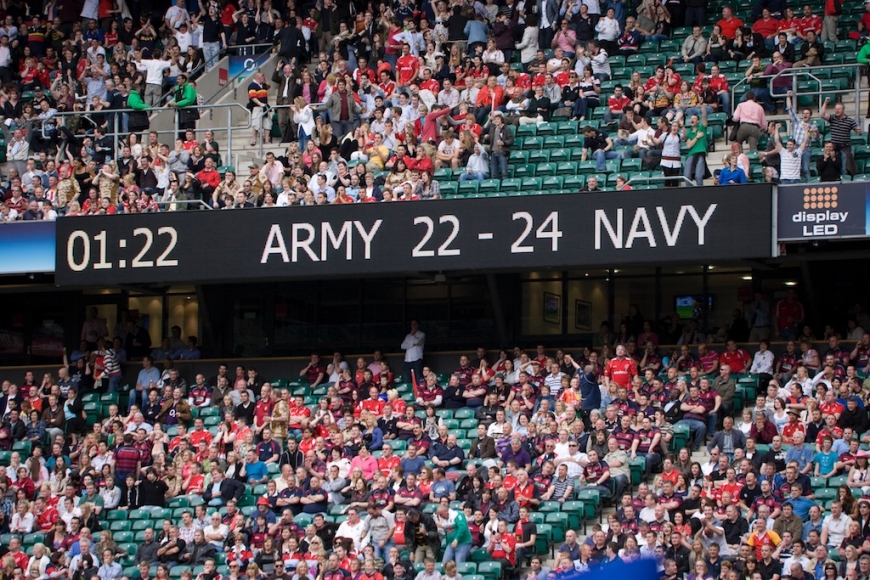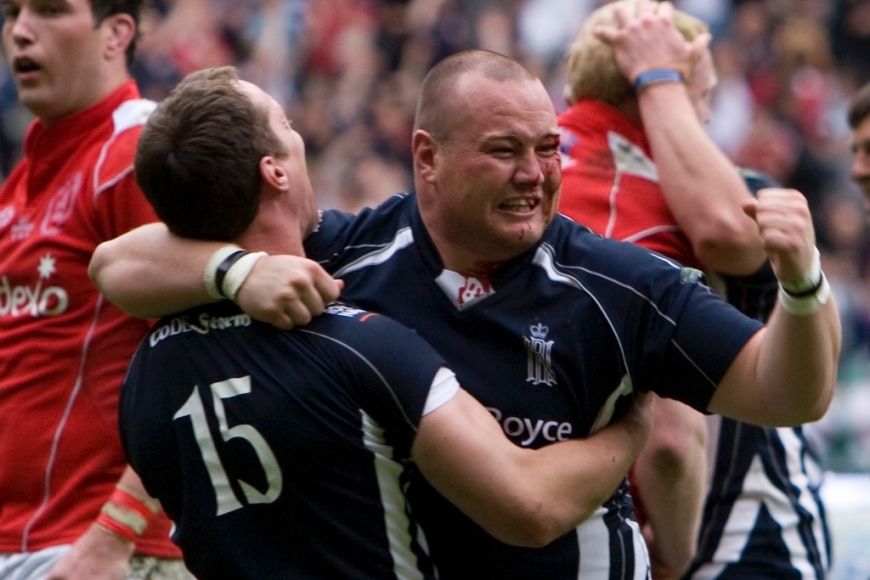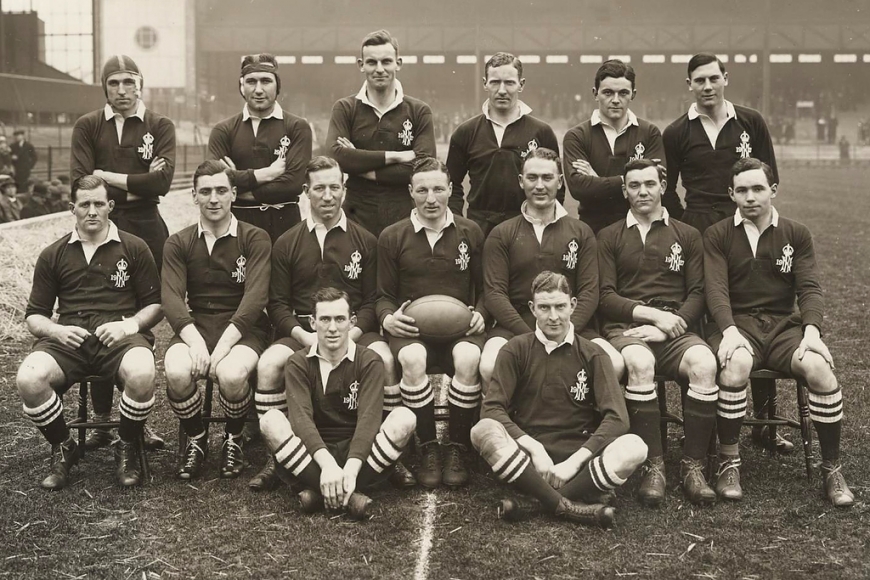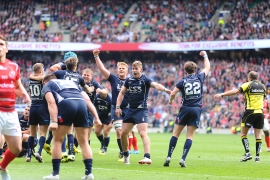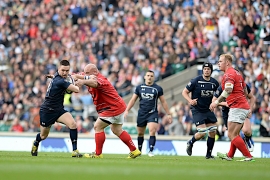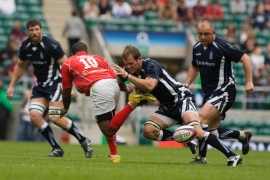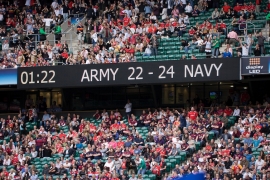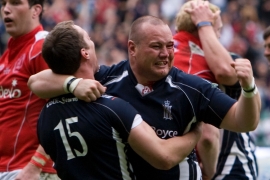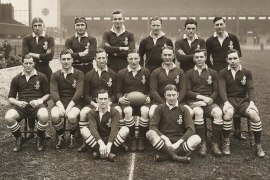Great Escapes – Army v Navy Match
Three games in the Navy’s long history of matches against the Army stand out as notable for the comeback achieved. The 2016 side hold the record for fighting back from the largest deficit and not losing the match. The 2010 hold the record for coming back from the largest deficit and winning the game and the 1921 side achieved a record breaking comeback, under the old scoring system. All three sides, through their comebacks, won the Inter Service titles. The win for the side in 2010 ended the longest winning streak in the history of the Army v Navy Match whilst the 1921 victory was part of the Navy’s longest winning streak in the Inter Services. Each match had it’s own turning points and rightly hold a cherished place in history but it is probably the match in 1921 where the win was achieved by a team under the greatest pressure.
The 2016 side fought back from a 19 point deficit in the last 30 minutes of the game. My match report from the day opened with: “With fifty minutes of the 99th Army Navy match gone, the Army were leading 26-7. They had taken control of a match which had started with the early skirmishes being shared. Not for the first time in their illustrious history the Royal Navy were facing what seemed insurmountable odds. However, for the next half hour, led by their youth but guided by some of their experienced warriors, they stemmed and then turned the tide in their favour to twice level the match in the last ten minutes. The Army Navy trophy was shared but the draw gave them the greater prize, a first Inter Services title since 2010.”
The game turned with the introduction of young Navy players from the bench, who earlier in the season had won the U23 Inter Service title. Chris Robinson quickly made his mark in the front row whilst Gareth Rees announced himself to the Twickenham faithful as a livewire player with immense potential, a shrewd eye for a gap and a willingness to take on the opposition backrow if ever an opportunity presented itself. His try was the start of the comeback and Robinson was part of the scrummage than won the penalty try to bring the Navy to within one score. Finally, young Rhys Dimmock-Williams stepped firmly out of his father’s shadow as he made his mark in the Senior XV jersey with a try that levelled the scores at 26-26. A Davies penalty restored an Army 3 point lead before Jon Humphrey landed a penalty to once more level the match at 29-29. In earlier years the championship would have been shared but as with the RAF’s Inter Service title in 2015 ,it was points difference that ensured the Navy were taking the title home. Though the 2016 team came back from 19 points down they did not win the match. In 2010 the side were 16 points down with 25 minutes to go whilst in 1921 the side were 10-0 at half time. Both comebacks saw the Navy winning, both required 3 scores and both were contributed to by Navy referees.
As the Selector and Head Coach in 2010 I know a little bit more about this match than some people and that includes the part played by lady luck in another very tight Army v Navy Match. 15-3 at half time and 22-9 at the 60 minute mark was not un-expected. The Navy side were still slightly underpowered compared to the Army that day, though the Navy had the edge in terms of overall fitness. A 5-2 split bench allowed for the pack to be bolstered and with, in essence, four opensides selected in the team the battle of the breakdown was always going to be key. With Egglestone leading the way in turnovers and Barden on the whole shackling the Army’s playmaker Prasad, the game turned as the Army’s penalty count mounted when fatigue saw them begin to regularly concede the ascendancy at the tackle. Two yellow cards from the team in Red helped the Navy’s cause and the pressure of the Army going for a record 9th consecutive win began to tell. The Army had rarely experienced pressure in an Inter Service match in the final quarter since 2001. Their inexperience of handling this pressure told as first Priddey, and then Evans, crossed for tries that turned the game for the Navy team. Skipper Pascoe had been chipping away all afternoon with penalty kicks at goal and although he missed the last conversion it mattered not as with time running out the ball was secured from the restart, cleared high into the West Stand and the match victory secured.
Both the 2016 and 2010 results were characterised by the Navy team being a side not under pressure to win. In 2010 expectancy had been increased with a record win over the RAF but was tempered by the dominance the Army had shown at Twickenham. Similarly, the 2016 team certainly were not favourites as they arrived at Twickenham for the match. This was very different to the 1921 side who were under strength but possibly still slight favourites. Like the 2010 team they arrived to play the Army having trounced the RAF the previous month with their skipper, Dave Davies scoring 2 of their 7 tries. Davies helped himself to a conversion and a drop goal, worth 4 points in those days, for a personal haul of 12 points (15 in today’s scoring system).
The 1921 side had been selected by former England international Norman Wodehouse, who had captained Davies when he made his Navy debut. In those days there were not coaching sessions like there are today. However, Davies did use the wise counsel of Percy Royds, himself a former International player, though in the days before the Royal Navy Rugby Union, and in 1921 an International referee. Royds could not make the Army match because he was in Cardiff refereeing a Five Nations game between France and Wales. Davies and Royds had agreed the tactics required from the Navy side for the match beforehand and it was with this joint game plan that Davies led his team out, in front of King George V, for the second Inter Service match to be hosted at Twickenham.
The team that day was without 4 of the Navy’s internationals. Halloran, Mackenzie and Thompson were taking part in the Five Nations match between Scotland and Ireland whilst Kershaw was laid low with influenza. Even though the Army lost one player, Usher, the Navy was always going to be disrupted playing without their pack leader, scrum half and both 1st choice centres. Even so Davies did not expect the woeful start his team endured. King, the Army wing, crossed twice in the opening quarter to give the Army a 6 point lead. After the 2nd try from King, Davies, usually so controlled, lost his personal composure as he let his team know, in no uncertain terms, his views. The air was turned blue to match the team’s jersey as Davies chastised the side; his annoyance made worse because King had been specifically highlighted as one of the Army’s most threatening players. The lead could have been worse but for both conversions being missed however King added to the Navy’s misery, just before half time, with a 4 point drop goal to extend the Army’s lead to 10-0 at the break.
The half time chat, held on the field of play, was interesting with Navy winger, Stephenson, almost having to be restrained when having his say about what had occurred in the first half. In later years it was the Navy pack that was to win plaudits for its abrasive style but in the 20s the grit in the side was all behind the scrum. Aside from Stephenson’s outburst the side were more calmly reminded about Royds’ words and game plan, which required a focus on man on man defence and also a good use of the kicking game.
The second half saw the Navy’s play transformed. First up tackles were being made and ground gained through effective kicking. From a controlled heel at a scrum it was Stephenson who crossed for the Navy’s opening try as the game neared 60 minutes. Shortly afterwards a Davies penalty kick reduced the Army’s lead to 4 points as the game entered the final 15 minutes of play. The Navy redoubled their efforts and frankly kicked the leather off the ball has they harried and chased down the Army, forcing a number of mistakes and gaining precious territory. Into the final 5 minutes and the ball was hoisted once more, the Army fullback fumbled and Eyres pounced for the score. 10-9 with the kick to come.
Earlier in the match the Army had been upset with the behaviour of the Navy crowd who had chanted ‘Navy, Navy, Navy’ incessantly during Army kicks at goal. The incident was widely reported and blamed entirely on a group of Naval Officer’s daughters. However, for this final kick at goal Twickenham fell in to the most respectful of silences, the ball was struck cleanly and through the posts. 11-10 to the Navy and just the restart to negotiate. As in 2010, so in 1921 the Army restarted the match requiring to secure possession. But from the kick it was the Navy who cleanly caught the ball and on both occasions the ball was safely delivered into the crowd to ensure a Navy win.
It was reported afterwards that the game was one of the most exciting ever and not just when comparing Service rugby. Also, that the game was won by nothing more than kick and rush. Rush, controlled by brain and allied to very effective kicking. Why are these reported facts of interest? Well they make more sense when you know the contents of letter written by Royds to Davies and read out to the team prior to kick off and the contents of which they were forcefully reminded about at half time. The nature of the language used is from a very different era, but I think its contents give an insight into some of the off-field planning from 1921 which contributed to on field success:
“Impress on them that every jack one must go all out, putting every ounce of ginger they possess into the game. I am afraid I feel our forwards lack ginger and are too much like old sheep. They must go on to the ground well roused. It must be remembered that the three quarters are just as likely to drop the ball as catch it, which might bring about serious results. Explain to them that it is up to them to make up for it in defence, and every Army man must be brought down. This is also an occasion where more kicking of a judicious nature would pay in the gaining of ground; but touch must be found. Naval three quarters always ought to kick more, and not always run.”
Though Royds was not at Twickenham he did celebrate the result as did Davies. In later years Davies was known for his calm manner but he showed, when he turned the air blue, that the Army v Navy Match is something special and beating the Army is even better. The comeback in 1921 was special and the 3 consecutive titles from 1920-22 remain a unique part of the history of the Royal Navy Rugby Union.
By line: Geraint Ashton Jones

